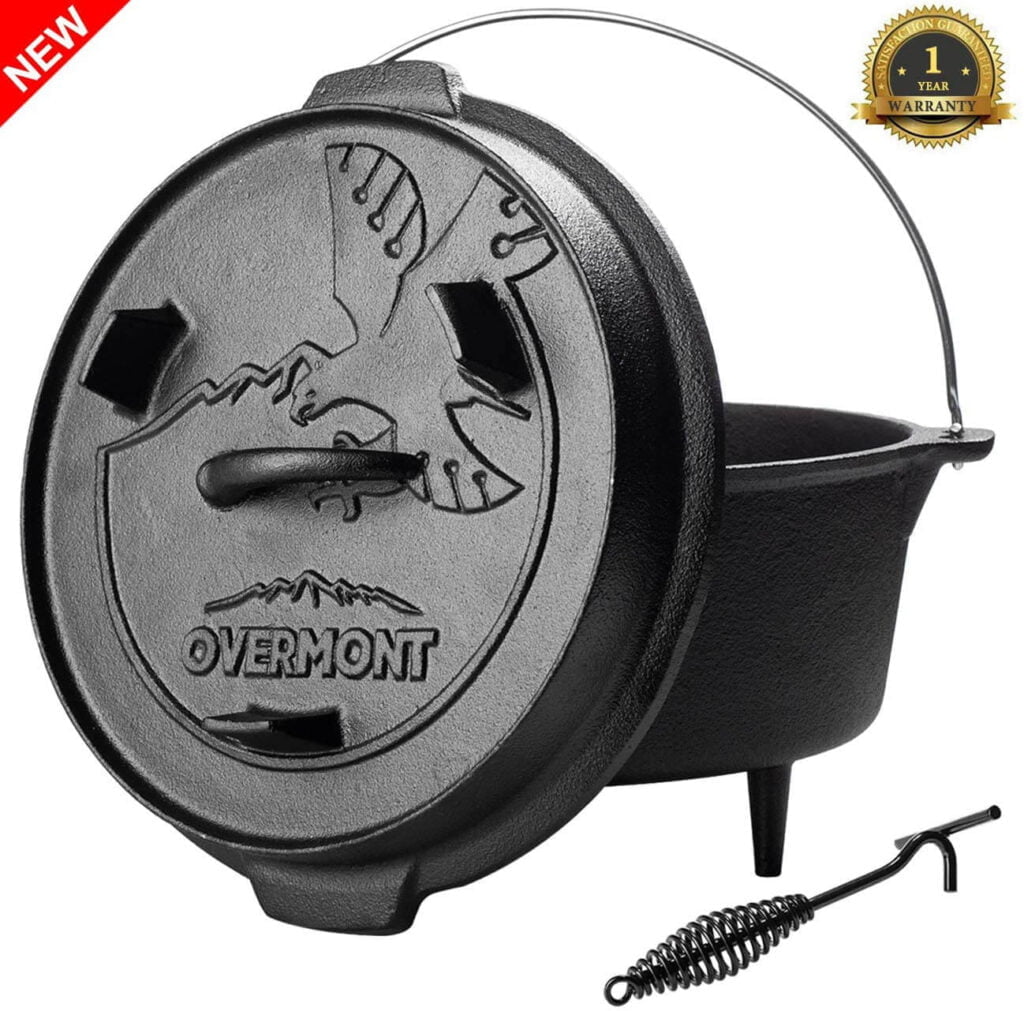A kitchen is like heaven in disguise for food lovers. And of course, you would want all the best and versatile products in here so you can make all your tasty foods with less hustle & more comfort.
A Dutch oven brings you just about that in your kitchen. Roasting, baking, boiling, braising, simmering-what more could you want form one product? And you must have stumbled upon at least a few recipes recommending Dutch ovens as they are popular all over the world.
So, before you go to the market or shops to buy one, we thought it would be better if you knew all about what a Dutch oven is & how to use a dutch oven. Brace yourselves or you might have a head spin seeing all you can do with a Dutch oven.
As you read dutch ovens reviews, it will be easier for you to decide what you want to buy.
Table of Contents
Guidelines on How to Use A Dutch Oven
What is a Dutch oven?
A Dutch Oven is a heavy cooking pot loaded with a pair of handles on each side and a tight-fitting lid to cover up the food you’re cooking.
Dutch ovens are usually made up of cast iron, both bare and enameled; but the enameled ones are always better. Cast iron does not conduct heat as well as aluminum or copper does.
So, once you cook in a Dutch oven, it stays hot for a long time after that keeping your food nice & warm. Normal copper or aluminum pans may be good for heating foods up quickly, but if you want your foods hot for a prolonged time, then cast-iron Dutch ovens are the best options.
Also, as we mentioned earlier, it can do a whole lot of things from boiling, roasting to braising, making soups, stews. So, a Dutch oven will always add versatility in your kitchen.
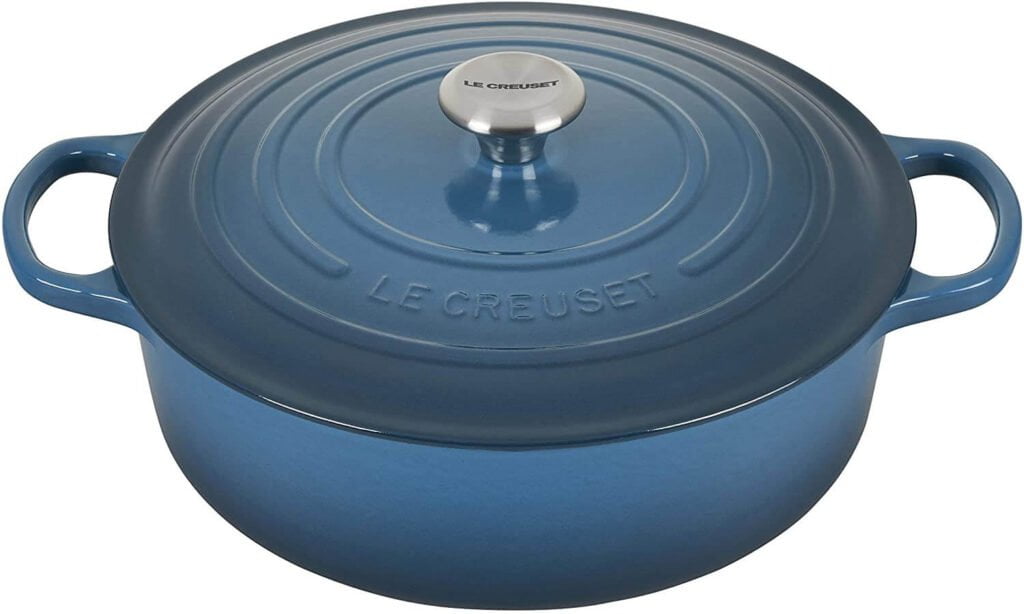
How to Use A Dutch Oven?
Some people do not know how to use a dutch oven. On the other hand, many of them know about it, but due to the lack of necessary guidelines, they can not use a dutch oven properly. So, We will let you know how to use a dutch oven accurately.
1. Making soups, stews
You can boil water & make delicious soups & stews in a Dutch oven. For that, you have to place all the heat or coal on the bottom of the Dutch oven and put the lid on to close it. The same heating process should be followed while frying also. (Except the lid will be open).
2. In actual Ovens
Dutch ovens have microwave oven compatibility; they are also compatible with all kinds of stoves. The heat in ovens come from all around, not just from underneath. So, the oven brings out more even cooking, textures & flavors. You can also use the lids in the oven unless they have some plastic parts in it. Additionally, Dutch ovens are great for slow-cooking and braising, making them a versatile tool in any kitchen. For added convenience, you can pair them with the best air fryer microwave combos to create a range of different meals with varying cooking methods. This combination allows for crispier textures and even faster cooking times, making meal prep easier than ever. Furthermore, Dutch ovens’ ability to retain heat makes them perfect for keeping meals warm after cooking. By combining them with the best air fryer microwave combo, you can streamline your cooking process, opting for faster, more efficient meal preparation when needed. This pairing allows you to enjoy both traditional and modern cooking techniques, creating dishes that are both succulent and satisfyingly crispy.
3. Searing
You can brown your meats easily in your Dutch oven. As the Dutch ovens handle heat well, you can heat yours to a high temperature on the stovetop & then put the meats there. Voila! You have brown meats ready for further processing.
4. Roasting
You can roast your meats more swiftly by stovetop & oven cooking with your Dutch oven. They are good for roasting as they can handle heat well. First, brown your meat in the Dutch oven on the stovetop at high heat, and then when the browning is done then pull it out from the stop & put it in the pre-heated oven at a lower temperature.
As said before, ovens heat your food from all directions; so, you will get better textures and flavors than ever when you finally get your roasted meats out of the oven. Additionally, the consistent heat distribution ensures your meal is cooked evenly, preventing any undercooked spots. If you’re looking to keep moisture in or prevent the exterior from browning too quickly, using aluminum foil in the oven can be a great trick. Simply wrap your food partially or completely to achieve a perfect balance between tenderness and a crispy finish.
5. Simmering
You can easily cook the foods that take a lot of time to simmer in Dutch ovens. Turn on your stove, heat it a bit less than usual, and simmer it for several hours.

How to take care of your Dutch Oven?
Usually, enameled Dutch ovens are very durable; so much so that they last one lifetime & more. But still, you have to take care of your things, which in this case, is you cleaning them. If yours is an enameled one, then cleaning is very easy.
After every cooking, use soapy water to completely remove the food particles. But don’t use anything containing any metal like steel wools or any dishwasher as they can damage the enamel coating of your Dutch oven. Additionally, avoid using harsh cleaning tools or abrasive substances that could scratch the surface. For stubborn stains, let the Dutch oven soak in warm water before gently scrubbing. Also, remember to remove pizza from oven rack immediately after cooking to prevent it from sticking or burning. It’s also important to dry your Dutch oven thoroughly after washing to prevent rust spots from forming, especially around the edges and handles. Proper care will ensure its durability and performance for many years. Whether cleaning your Dutch oven or **removing pizza from oven rack**, always prioritize gentle methods to avoid unnecessary damage. When learning how to safely remove pizza from the oven rack, it’s best to use a spatula or wooden peel to gently lift the pizza without scratching any surfaces. Always be sure to wear oven mitts to protect your hands from the heat. Proper handling techniques and regular maintenance will prolong the life of your kitchen tools while ensuring consistently great results.
Although, because of the enamel coating, these enameled Dutch ovens will last lifelong its color may faint over a long period of usage. But considering what they will be offering you for a lifetime, it is nothing to be concerned about.
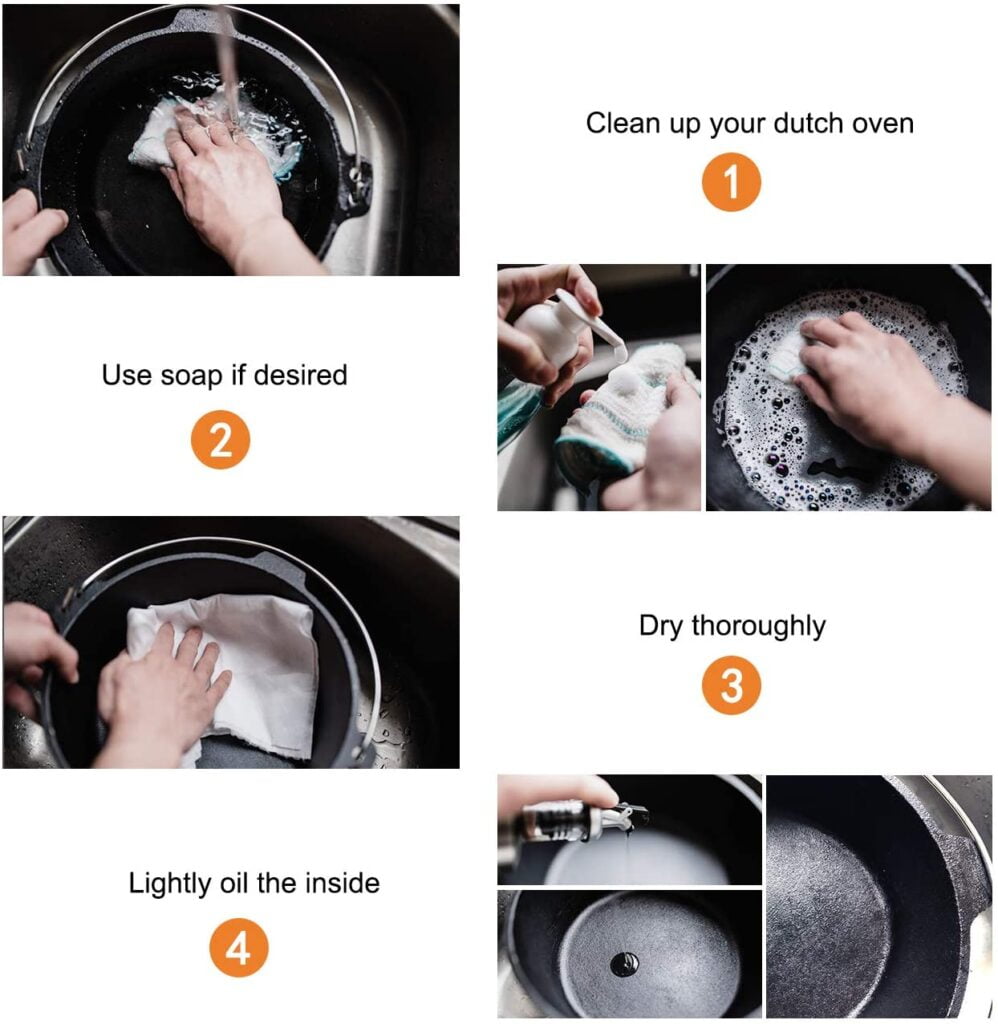
But if yours is a bare cast iron one, then the easy job becomes a bit harder. Firstly, we would recommend you buying a pre-seasoned bare cast iron one if you really want one with bare cast iron. (!) You can clean your pre-seasoned one using hot water & scrub brush but not soap water. And after you’ve cleaned & completely dried the Dutch Oven, add about a spoon of oil in it and wipe the whole surface using clothes or kitchen tissues.
And in any case, if you’ve already bought a bare cast iron Dutch oven without pre-seasoning, we have a solution for that too. You can pre-season it at home before its first use. To do this, simply coat the entire surface of the Dutch oven with a thin layer of oil, and then bake it upside down in the oven at 450°F for about an hour. Make sure it’s well-ventilated, as this process can get a little smoky! Just a quick reminder: don’t use rubber handle pans in ovens at high temperatures, as the heat can damage the handles.
First, Wash & completely dry your Dutch oven. Then apply a thin layer of kitchen tissue or cloth dipped in oil (preferably vegetable oil) on the surface of it.
Then turn the Dutch oven upside down & heat it for 1 hour in a pre-heated oven. (up to around 160 degree Celsius or 320-325 Fahrenheit) Finally taking out the Dutch oven, let it cool completely and it will be ready for use.
So, from this article, we think that you have got the idea of how to use a dutch oven.
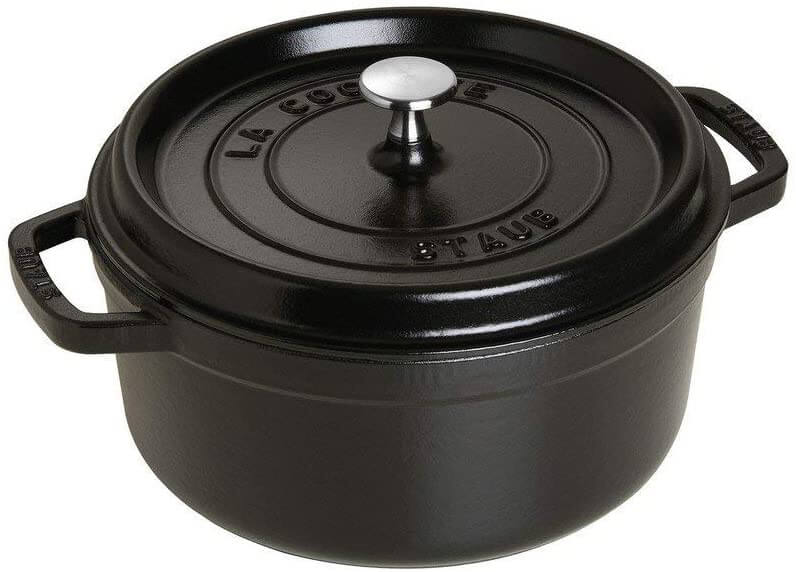
Can You Sharpen Knives Using a Dutch Oven’s Edge?
Using the edge of a Dutch oven to sharpen kitchen knives may seem like a quick fix, but it’s not ideal. The surface isn’t designed for honing blades, potentially damaging both the oven and knife. Instead, a proper sharpening tool ensures precise results and extends the life of your knives.
FAQ
Q- Do you use a Dutch oven in the oven or on the stove?
A- You can use it any kind of stoves as well as ovens. Just make sure your Dutch oven doesn’t have plastic handles or you don’t put plastic lid before using it in the oven.
Q- What to use if you do not have a Dutch oven?
A- A slow cooker or a crock-pot may be the best option if you don’t have a Dutch oven.
Q- What is the best thing to cook in a Dutch oven?
A- You can cook literally anything, even bake bread in it.
Q- How should I use a cast-iron Dutch oven when I am using it for the first time?
A- If it is an enameled cast iron or pre-seasoned bare cast iron Dutch oven you can just use it for the first time after cleaning it. But if it just a bare cast iron Dutch oven without any pre-seasoning you’ve got to pre-season it first. (Process is given above)
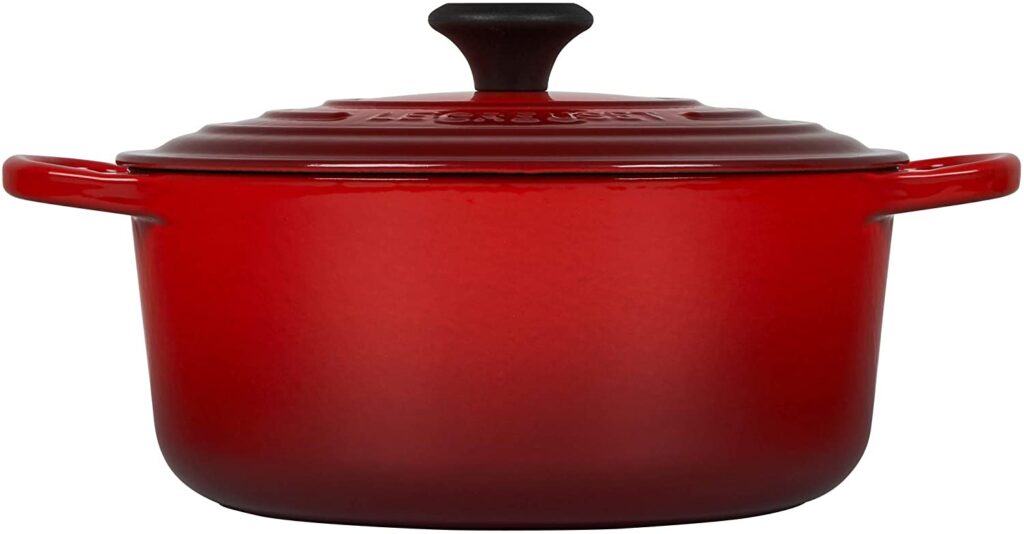
Conclusion
Our discussion above explains how to use a dutch oven and what it does. A Dutch even brings about a sense of completeness in your kitchen with its unique combination of versatility & extra durability.
They aren’t very cheap, but their great all-around performance over a lifetime of price surely makes every cent spent on these products worth it. It will also bring some innovation in the taste of home.
So, in case you’re wondering when to buy your very own Dutch oven, there is no time like today! Hurry up & grab yours. (And of course, the enameled or pre-seasoned ones) Happy Cooking with Cuisine Stuff!
